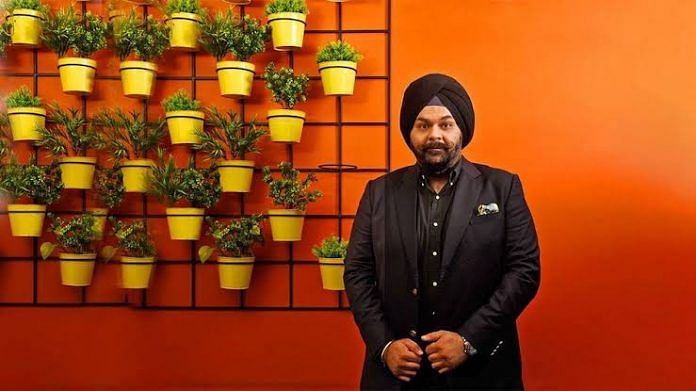Since the Narendra Modi government came to power in 2014, there has been a clarion call of “Make in India” towards manufacturers of consumer electronics. And slowly but surely, India has made some ground in the last eight years. Foxconn, the world’s largest contract manufacturer, now has facilities across the country that assemble phones for Xiaomi and Apple. Samsung has one of the largest factories in the world in Greater Noida. Oppo has its manufacturing facility in Greater Noida too where it makes products for Oppo, OnePlus and Realme. There are other foreign players like the Taiwanese brethren of Wistron and Pegatron that also help Apple manufacture its gadgets, and then there is Dixon electronics, which manufactures smart TVs from the likes of Xiaomi and others. But in all this, we haven’t seen much from Indian brands.
These days we hear about audio brands like Boat and Noise. But since the heyday of Micromax in 2013-2014, there has been mainly one indigenous brand that has given the likes of Xiaomi, Samsung, Sony, and LG a tough time. It’s Vu, a well-known television brand. But Vu isn’t the only one. Super Plastronics Private Limited (SPPL) has been one of the flag bearers of the local consumer electronics manufacturing scene.
Roots of SPPL
SPPL, like Vu, has been around for a long time since the late 1980s with its expertise being in injection-moulded plastic, which was originally deployed for the manufacturing of CRT TVs in the 1990s and early 2000s.
It also manufactures its products out of a facility in Noida. And when it comes down to online sales, its brands – Thomson, Kodak and Blaupunkt combined – are now the second best-selling smart TV brands in the online retail space behind Xiaomi.
SPPL was founded by Amarjeet Singh Marwah and is currently helmed by his son Avneet Singh Marwah from its Okhla HQ in South Delhi. SPPL used to be behind the Suntek and SVL brands – but these days it is the brains and brawn behind Thomson, Kodak and Blaupunkt – all well-known global brands. SPPL manufactures and promotes smart televisions from all three brands across India and has become one of the better players in the value smart TV space.
“We are about a 30-year-old company, and we started with televisions. Back then we started with the plastic moulding of the plastic of the old CRT television,” Avneet Marwah said.
What’s interesting is that Marwah decided to target iconic brands that were not known for televisions. He told me he convinced the Kodak management on a trip to New York to give SPPL the licence for launching TVs under the brand name.
“It took me about two years to win Kodak. I travelled to New York, to convince Kodak. So, my thought process was from a still picture, we can convince customers to video and that is television,” explained Marwah.
He then targeted audio expert Blaupunkt whose speakers and head units have often been seen in automobiles. But this happened more by chance as Blaupunkt had a falling out with its former licensee in India. But more recently, Marwah and his team have been flexing their technological chops with the introduction of Thomson which has been in the market since 2020.
Thomson was in India in the 1990s and 2000s. It has been revived by SPPL with made-in-India TVs with the backing of Google and Dolby. Its latest models have even managed to provide the latest Google TV experience before industry leader Xiaomi, which has traditionally focused on its Patchwall operating system.
Also read: 5G launch, festival sales are tempting but buying a smartphone in 2022 is a bad idea
How good are smart TVs?
I have tested the Thomson models like the Oath series and its latest QLED series of televisions. These models have been pitched as premium offerings sold on Flipkart while the Kodak brand operates with a more mass-market brand also exclusive to the Walmart-backed e-retailer. The Oath series provided impeccable picture quality, but these TVs had a few shortcomings as the interface was slow, the speakers were tiny, and it lacked some polish. But this was 2020.
Two years down the line, the QLED series truly is impressive. It gets Google TV support which makes it incredibly attractive as it is the best interface that you can get on a smart TV. The QLED quality is quite good and then there are front-firing speakers while the entire TV has very narrow bezels, but ensures a great balance between design, picture quality and audio quality. This has been managed despite the semiconductor crisis which has been hard on electronic manufacturers.
Marwah hints at further plans of going big with the brands he has licenses for but believes that he has missed the bus to create a meaningful brand of his own as Vu managed. But his ambitions could veer elsewhere. He also says that SPPL has achieved technological parity with big brands like Samsung and Xiaomi, helped by the commoditisation of display technology.
SPPL has already expanded to consumer electronics and is working on making home appliances like washing machines which it is already selling. Marwah plans to enter the home audio space but insists that Blaupunkt will not be the brand that will be used. He hinted at some other brand.
When asked about the smartphone space, Marwah insisted that technology-wise and relationship-wise, SPPL was fully equipped. But he admitted that it was a very capital-intensive business, something that he wasn’t willing to enter. He did, however, say that if he had an investor, SPPL would be open to entering the space.
Sahil Mohan Gupta is a Delhi-based technology journalist. He tweets @DigitallyBones. Views are personal.
(Edited by Prashant)






